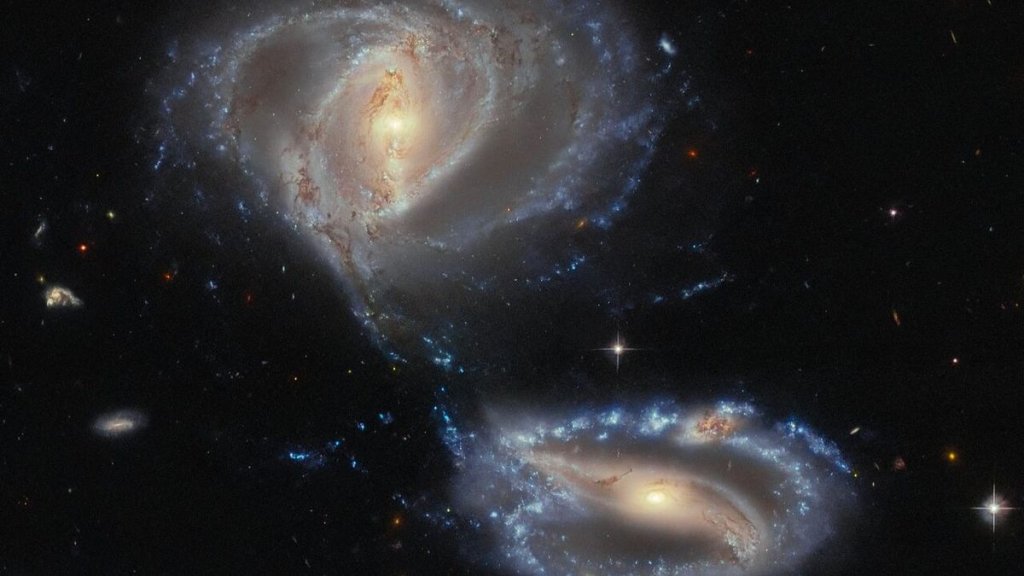
Hubble Space Telescope reveals an unexpected galaxy trio (photo) (Image Credit: Space.com)
A new image from the Hubble Space Telescope reveals a galaxy overshadowed by its larger, merging companions.
Located roughly 500 million light-years from Earth lies a galactic pair collectively known as Arp-Madore 2339-661. The two galaxies are in the process of merging, according to a statement from the European Space Agency. One galaxy is known as NGC 7733 — the smaller galaxy seen in the lower right — and the other is NGC 7734 — the larger galaxy in the upper left.
However, hidden in the star-studded spiral arm of NGC 7733 is yet another galaxy, referred to as NGC 7733N. Until now, this realm has appeared to be obscured by dark dust. Using the Hubble data, however, astronomers were able to discern a knot-like structure with a notable red glow, standing out in comparison to the bright blue stars of NGC 7733.
Related: The best Hubble Space Telescope images of all time!
“This could easily pass as part of NGC 7733, but analysis of the velocities (speed, but also considering direction) involved in the galaxy shows that this knot has a considerable additional redshift, meaning that it is very likely its own entity and not part of NGC 7733,” ESA officials said in the statement.

The three galaxies all lie relatively close to each other in the constellation Tucana and are interacting gravitationally with one another. The Hubble photo captures the exchange of material between NGC 7733 and NGC 7734, which are on course to merge into a single, larger galaxy. As the galaxies grow closer, the gravitational pull of NGC 7734 siphons gas and dust from its smaller companion.
“This is actually one of the many challenges that observational astronomers face: working out whether an astronomical object really is just one, or one lying in front of another as seen from Earth’s perspective!” ESA officials said.





